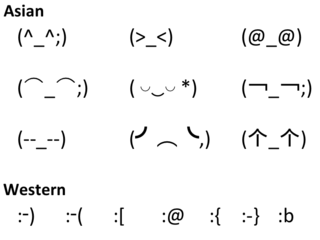Attention
Emotion Perception Across Cultures
How culture influences the way we interpret facial expressions of emotion.
Posted October 9, 2016 Reviewed by Gary Drevitch

“The face is a picture of the mind with the eyes as its interpreter.” —Cicero
The breadth of emotions that our eyes are able to express is truly far-reaching. From joy to longing, from anger to fear, from sadness to disgust, eyes can become powerful windows to our internal states. We use our eyes to take in the world around us, and to reflect the world within us. To reveal our inner emotional states with our facial expressions and to interpret them accurately are among the foundations of social interaction.
The biological significance of the face as an instrument for communication starts in infancy. As early as 9 minutes after birth, infants prefer to look at faces rather than objects, and as young as 12 days old, babies have the ability to imitate facial gestures. This ability later contributes to the development of cognitive skills such as language and mentalizing (i.e., understanding others’ intentions).
Not all is straightforward when it comes to reading emotions—especially when reading emotions across cultures. Despite the universality of basic emotions, as well as the similar facial muscles and neural architecture responsible for emotional expression, people are usually more accurate when judging facial expressions from their own culture than those from others. This can be explained by the existence of idiosyncratic and culture-specific signatures of nonverbal communication. These cultural “accents” influence interactions between nature (biology) and nurture (cultural contexts), which, in turn, affect the perception and interpretation of emotions.
So, how does culture influence emotion perception?
One way is in the perception of the intensity of emotions. For example, Americans have been shown to rate the same expressions of happiness, sadness, and surprise more intensely than the Japanese. Furthermore, differences have been found in the way we infer internal experiences from external displays of emotion. When asked to rate faces on how intensely they were portraying certain emotions and how intensely posers were actually feeling these emotions, American participants, for example, gave higher ratings to the external appearance of emotions. The Japanese participants, on the other hand, assigned higher ratings to internal experiences of emotions. Therefore, depending on cultural contexts, internal turmoil might not necessarily be legible on the face, while an overly excited smile might be masquerading only lukewarm enthusiasm.
This cross-cultural discrepancy in interpreting emotion intensity has been attributed to display rules.
Display rules are “cultural norms that dictate the management and modification of emotional displays depending on social circumstances” (Matsumoto et al., 2008). Culture-specific display rules are learned during childhood. These rules can tell us whether it’s appropriate to amplify, de-amplify, mask, or neutralize our emotional displays, as well as provide us with normative prescriptions for when and how to display our emotions.
A classical study from the 1970s that demonstrates cross-cultural differences in display rules involved American and Japanese participants watching stressful films under two conditions—once alone, and once with an experimenter in the room (Ekman, 1971). Participants from both cultures produced similar facial expressions when watching the films alone. However, with the presence of the experimenter, the Japanese masked their negative emotions through smiles. The Americans, on the other hand, continued to display their negative emotions in front of the experimenter. These differences were explained by differences in display rules in Japan and in the U.S.; namely, the Japanese tendency to conceal negative emotions in social settings in order to maintain group harmony, and the tendency to endorse emotion expression in individualistic cultures such as that of the U.S.
Cross-cultural variations have also been found in the cues we look for when interpreting emotions. Research tracking eye movements to assess where people direct their attention during face perception has shown that across cultures, people may be sampling information differently from faces. For instance, when identifying faces, East Asian participants focused on the central region of the face around the nose, giving more importance to the eyes and gaze direction. Western Caucasian participants, on the other hand, expected signals of facial expressions of emotion from the eyebrows and the mouth region.
Attentional biases were also highlighted when participants were asked to look at faces with conflicting expressions (i.e., sad eyes with a happy mouth). The results showed that Japanese participants gave more weight to the emotion portrayed by the eyes, while American participants were relatively more influenced by the mouth region. One possible explanation for these differences is that display rules prescribing high levels of affect control prompt people to pay closer attention to features that are more difficult to manipulate and thus carry more information about true emotional states (i.e., eyes). Whereas, in cultures with less stricter display rules, people concentrate on the mouth, as it is the most expressive part of the face.

Examples of emoticons commonly used in different cultures. Note how in Asian cultures, eyes are typically used to express emotion, while in Western cultures the mouth reflects the emotion expression.
According to some researchers, these results can be reflected in the stylized emotion expressions depicted with emoticons: in Japan, emoticons convey emotion mostly through eyes, but in the West, mostly through the mouth.
We all use facial expressions as indispensable tools for social communication, but culture influences emotion perception in subtle yet important ways. From cognitive styles shaped by display rules to attentional biases brought forth by the weight we give facial cues, an awareness of these cultural influences may improve the accuracy with which we decode emotions during our interactions with people from other cultures.
References
Blais, C., Jack, R. E., Scheepers, C., Fiset, D., and Caldara, R. (2008). Culture shapes how we look at faces. PLoS ONE 3:e3022. doi: 10.1371/journal.pone.0003022
Ekman, P., & Friesen, W. V. (1969). The repertoire of nonverbal behavior: Categories, origins, usage, and coding. Semiotica, 1, 49-98.
Ekman, P., Friesen, W. V., O'Sullivan, M., Chan, A., Diacoyanni-Tarlatzis, I., Heider, K., ... & Scherer, K. (1987). Universals and cultural differences in the judgments of facial expressions of emotion. Journal of Personality and Social Psychology, 53(4), 712.
Ekman, P. (1971). “Universals and cultural differences in facial expressions of emotion,” in Nebraska Symposium on Motivation, Vol. 19, ed J. Cole (Lincoln, NE: University of Nebraska Press), 207–282.
Elfenbein, H. A., & Ambady, N. (2003). Universals and cultural differences in recognizing emotions. Current Directions in Psychological Science, 12(5), 159-164.
Engelmann, J. B., & Pogosyan, M. (2013). Emotion perception across cultures: the role of cognitive mechanisms. Frontiers in Psychology, 4, 118.
Jack, R. E., Caldara, R., & Schyns, P. G. (2012). Internal representations reveal cultural diversity in expectations of facial expressions of emotion. Journal of Experimental Psychology: General, 141(1), 19.
Jack, R. E., Blais, C., Scheepers, C., Schyns, P. G., & Caldara, R. (2009). Cultural confusions show that facial expressions are not universal. Current Biology, 19(18), 1543-1548.
Jack, R. E., Garrod, O. G., Yu, H., Caldara, R., & Schyns, P. G. (2012). Facial expressions of emotion are not culturally universal. Proceedings of the National Academy of Sciences, 109(19), 7241-7244.
Johnson, M. H., Dziurawiec, S., Ellis, H., and Morton, J. (1991). Newborns' preferential tracking of face-like stimuli and its subsequent decline. Cognition, 40, 1-19.
Matsumoto, D., Kasri, F., & Kooken, K. (1999). American-Japanese cultural differences in judgements of expression intensity and subjective experience. Cognition & Emotion, 13(2), 201-218.
Matsumoto, D., Yoo, S. H., & Fontaine, J. (2008). Mapping expressive differences around the world the relationship between emotional display rules and individualism versus collectivism. Journal of Cross-Cultural Psychology, 39(1), 55-74.
Matsumoto, D., & Ekman, P. (1989). American-Japanese cultural differences in intensity ratings of facial expressions of emotion. Motivation and Emotion, 13(2), 143-157.
Markus, H. R., & Kitayama, S. (1991). Culture and the self: Implications for cognition, emotion, and motivation. Psychological Review, 98(2), 224.
Marsh, A. A., Elfenbein, H. A., & Ambady, N. (2003). Nonverbal “accents” cultural differences in facial expressions of emotion. Psychological Science, 14(4), 373-376.
Meltzoff, A. N., and Moore, M. K. (1977). Imitation of facial and manual gestures by human neonates. Science, 198, 75-78.
Meltzoff, A. N., & Decety, J. (2003). What imitation tells us about social cognition: a rapprochement between developmental psychology and cognitive neuroscience. Philosophical Transactions of the Royal Society B: Biological Sciences, 358(1431), 491-500.
Pogosyan, M., & Engelmann, J. B. (2011). Cultural differences in affect intensity perception in the context of advertising. Frontiers in Psychology, 2, 313.
Yuki, M., Maddux, W. W., & Masuda, T. (2007). Are the windows to the soul the same in the East and West? Cultural differences in using the eyes and mouth as cues to recognize emotions in Japan and the United States. Journal of Experimental Social Psychology, 43(2), 303-311.


